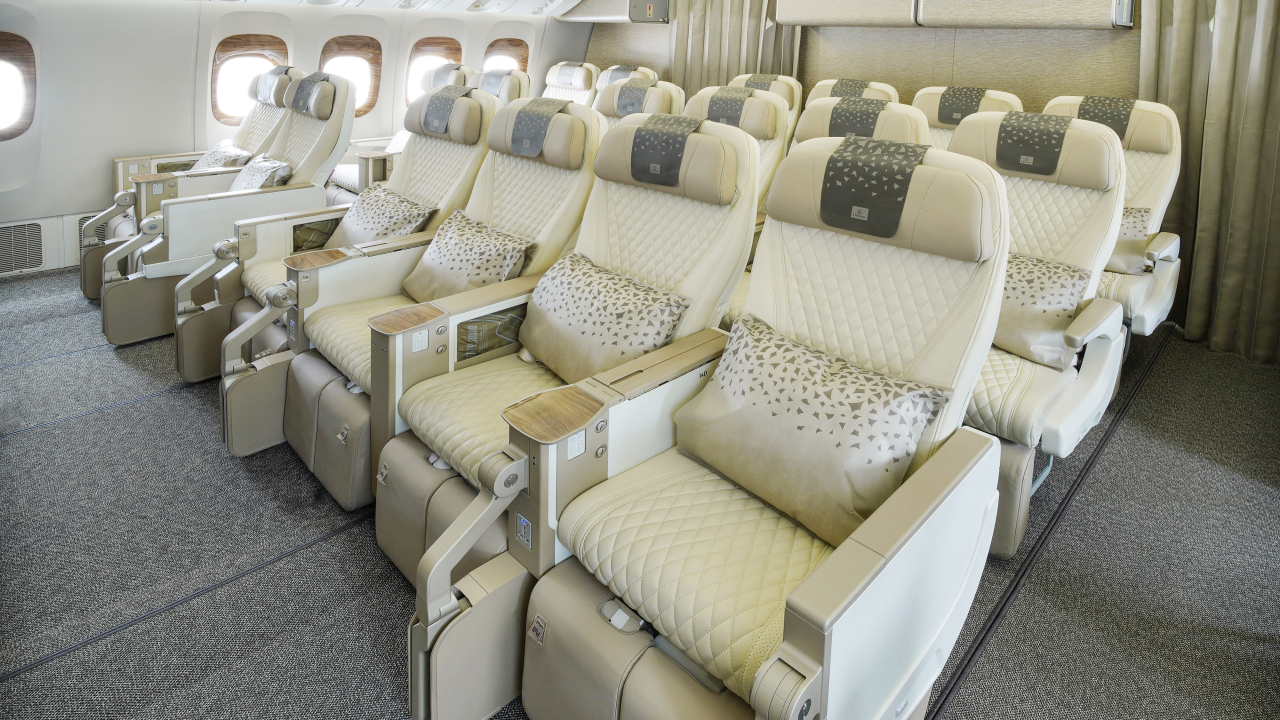AIME 2010: Middle East leading the way with connectivity
Passenger connectivity has come and gone over the years, writes BRENDAN GALLAGHER. But now mobile phones and Internet access in the cabin look like they're here to stay, and Middle Eastern airlines are among the earliest adopters

After more than 20 years of false starts, usable, affordable air-to-ground communications in the cabin are a reality. The US majors have all signed up for Aircell Gogo Internet, which is now available in hundreds of aircraft flying in domestic airspace. Onboard mobile phone made its full commercial debut nearly two years ago and two dozen carriers are committed. And in the next few weeks Internet access over the Inmarsat worldwide satellite system will become a standard offering to passengers for the first time.
That last milestone will go to the credit of Oman Air, which plans to roll out the OnAir Internet service in its new Airbus A330s from next month
Geneva-based OnAir has two offerings: Mobile OnAir for GSM/GPRS mobile phones and other handhelds, and Internet OnAir, which supports wired and wireless Internet access via passengers’ own laptops and the in-seat IFE system. The Omani carrier has opted for both and plans to equip a total of seven A330s. In addition to a new A330-300 line-fitted and delivered last year, a pair of A330-200s and a -300 already in service will be retrofitted, while three aircraft to be delivered this year and next will be line-fitted.
The A330s have the latest version of Airline Network Architecture (ALNA V2), Airbus’ own onboard infrastructure for mobile phone and Internet. The earlier ALNA V1 is compatible with Inmarsat’s 64kbit/sec service, while V2 supports the 432kbit/sec SwiftBroadband link used to deliver Mobile OnAir and Internet OnAir. ALNA V2 also facilitates access to OnAir via the seatback IFE screen.
The move will allow Oman Air passengers throughout the aircraft to make and receive mobile phone calls, send and receive text messages and email, surf the Web and use social networking facilities like Facebook and Twitter. “This great new service will enrich the passenger experience and complement the stunning new interiors we are offering in all three classes of travel,” says Oman Air chief executive Peter Hill.
Hard on Oman Air’s heels are Saudi Arabian Airlines, which has similar plans for the eight Airbus A330-300s it will begin receiving in April; Egyptair, with the same number of -300s on order for delivery from August; and Afriqiyah Airways.
Libyan-based Afriqiyah plans a two-phase implementation. In the first the full suite of services will be made available on the airline’s fleet of three Airbus A330s. In the second Mobile OnAir will be implemented in the 14 A319 and A320 narrowbodies the carrier has in service or on order. Afriqiyah is thus the first airline in the world to opt for connectivity across an entire fleet of short, medium and long-haul aircraft.
Already operational with Mobile OnAir only are Kuwait’s Wataniya Airways, Royal Jordanian and Qatar Airways.
Wataniya became OnAir’s launch customer at the beginning of last year. “We’re pleased with the feedback from our guests,” says Wataniya chief executive George Cooper. “We can now offer up to 12 simultaneous calls, and usage of both voice and data, primarily BlackBerry, exceeds our expectations.”
Though OnAir has the larger customer base, rival AeroMobile can claim the biggest single fleet. Launch customer Emirates now has around 70 aircraft equipped and passed the milestone of a million passenger log-ons towards the end of last year.
“We’re not surprised at the number of passengers who like to keep in touch in-flight, as we’ve always seen pretty good traffic from the earlier in-seat phone, email and text messaging service,” says Patrick Brannelly, the airline’s VP for passenger communications and visual services. “But it’s clear that being able to use your own phone is even more convenient – the phone is familiar and there’s no need to swipe a credit card.”
The airline continues to equip its Airbus A330s and A340s and Boeing 777s at a rate of two to three aircraft a month and plans to make the service available in its whole fleet. “As well as pushing ahead with installations, we intend soon to offer GPRS data, which will allow passengers to use BlackBerry and other email services,” says Brannelly.
Airlines in the rest of the world have dithered over connectivity, unnerved by groundless fears about “cabin rage” and struggling to decide among the various Internet access solutions. Meantime, the Middle Eastern carriers have forged confidently ahead into a position of global leadership. Says OnAir chief executive Benoit Debains:
“Once you open up a market like the Middle East, it can only be a matter of time before the others follow.”
Stay up to date
Subscribe to the free Times Aerospace newsletter and receive the latest content every week. We'll never share your email address.

